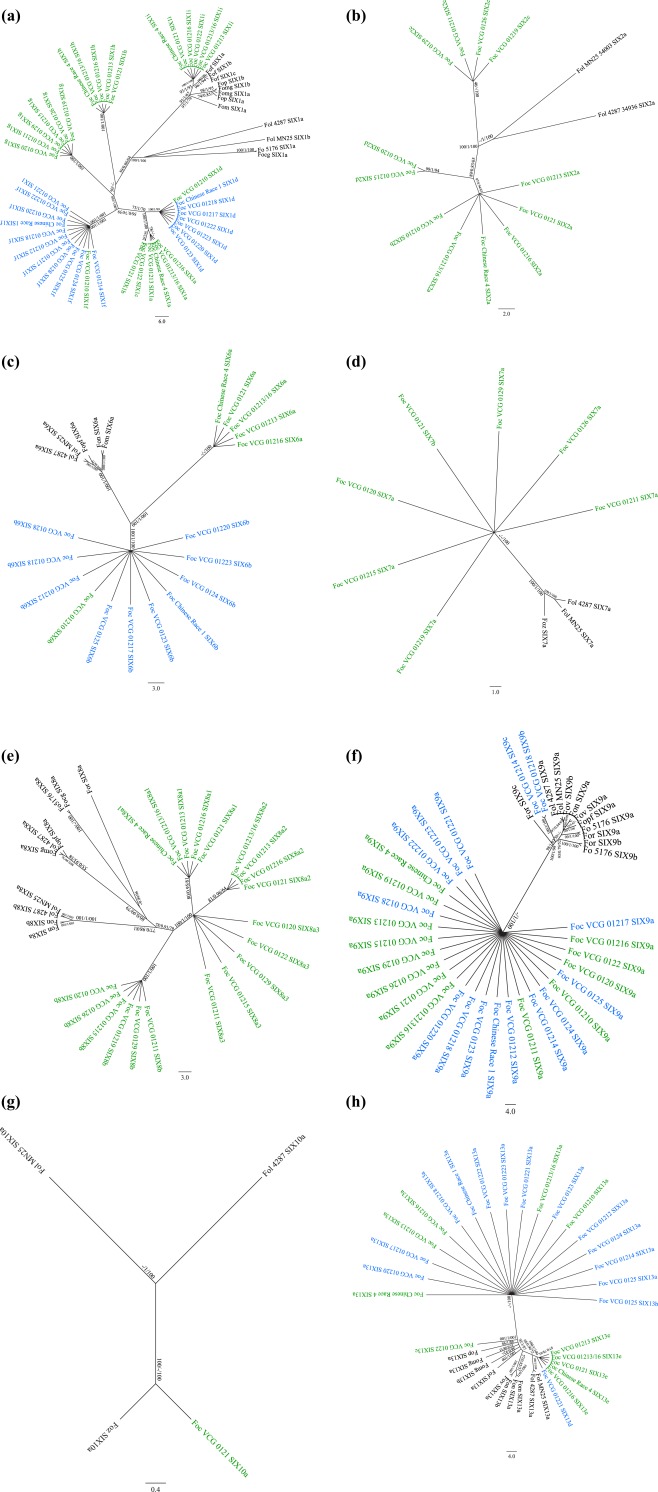Figure 2.

Best genealogies of the Secreted In Xylem (SIX) genes SIX1 (a), SIX2 (b), SIX6 (c), SIX7 (d), SIX8 (e), SIX9 (f), SIX10 (g) and SIX13 (h) generated using the maximum likelihood (ML) method. Trees with similar topologies were also inferred using maximum parsimony (MP) and Bayesian interference (BI) methods. Internal node support is indicated as ML bootstrap proportions/Bayesian probabilities/MP bootstrap proportions. For each external node, the abbreviated forma specialis as defined in Tables 3 and 4 in which the sequence was identified and the SIX gene homologue variant are indicated. For Fusarium oxysporum f. sp. cubense (Foc), the vegetative compatibility group (VCG) in which the SIX gene homologue was identified is also indicated. The VCGs of Foc that clustered in clade A of the infraspecies phylogeny are shown in blue, whereas the VCGs of Foc that clustered in clade B of the infraspecies phylogeny are shown in green. The sequences from other formae speciales are shown in black.
